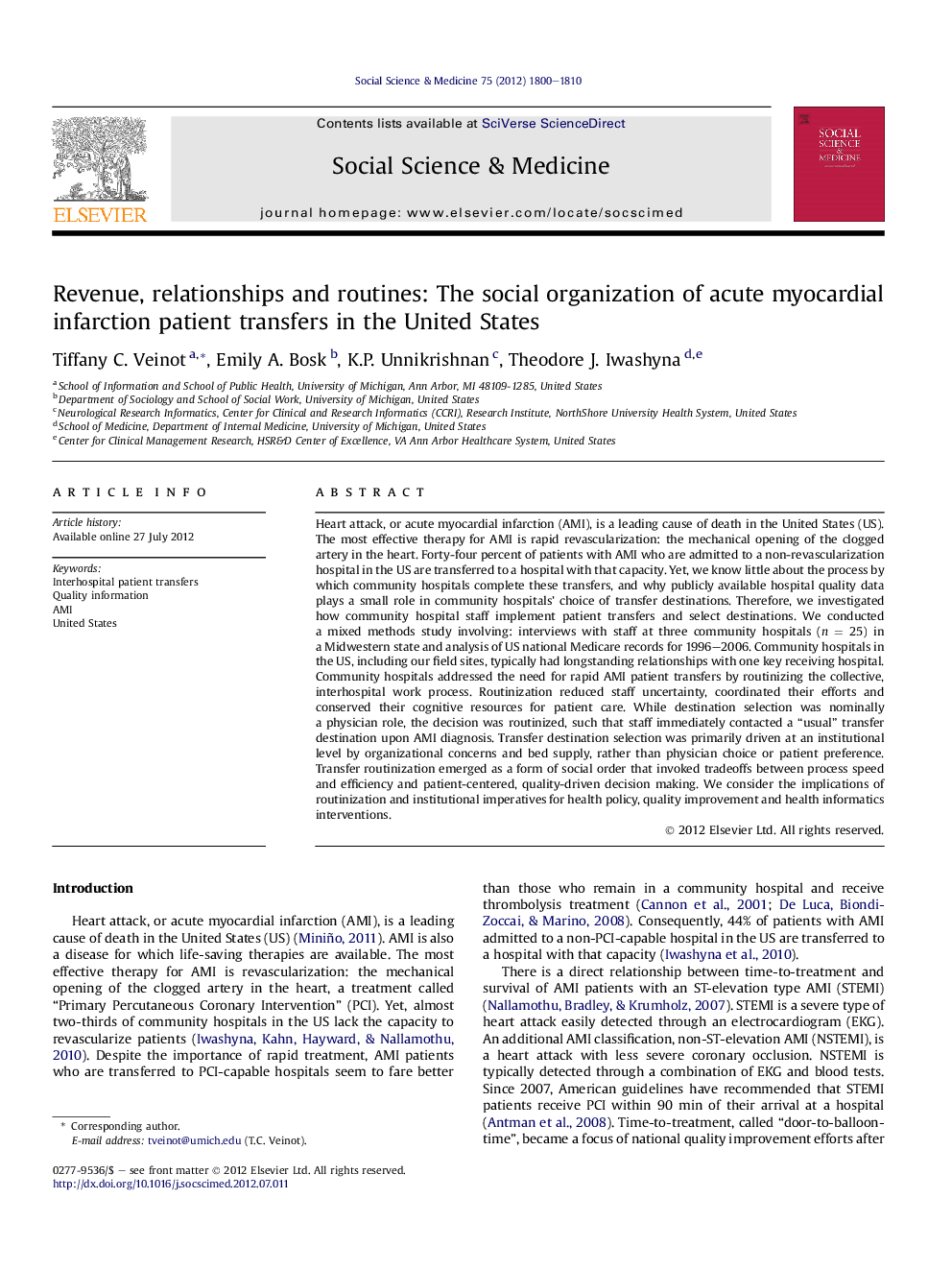| Article ID | Journal | Published Year | Pages | File Type |
|---|---|---|---|---|
| 952384 | Social Science & Medicine | 2012 | 11 Pages |
Heart attack, or acute myocardial infarction (AMI), is a leading cause of death in the United States (US). The most effective therapy for AMI is rapid revascularization: the mechanical opening of the clogged artery in the heart. Forty-four percent of patients with AMI who are admitted to a non-revascularization hospital in the US are transferred to a hospital with that capacity. Yet, we know little about the process by which community hospitals complete these transfers, and why publicly available hospital quality data plays a small role in community hospitals' choice of transfer destinations. Therefore, we investigated how community hospital staff implement patient transfers and select destinations. We conducted a mixed methods study involving: interviews with staff at three community hospitals (n = 25) in a Midwestern state and analysis of US national Medicare records for 1996–2006. Community hospitals in the US, including our field sites, typically had longstanding relationships with one key receiving hospital. Community hospitals addressed the need for rapid AMI patient transfers by routinizing the collective, interhospital work process. Routinization reduced staff uncertainty, coordinated their efforts and conserved their cognitive resources for patient care. While destination selection was nominally a physician role, the decision was routinized, such that staff immediately contacted a “usual” transfer destination upon AMI diagnosis. Transfer destination selection was primarily driven at an institutional level by organizational concerns and bed supply, rather than physician choice or patient preference. Transfer routinization emerged as a form of social order that invoked tradeoffs between process speed and efficiency and patient-centered, quality-driven decision making. We consider the implications of routinization and institutional imperatives for health policy, quality improvement and health informatics interventions.
► Community hospitals in a Midwestern state of the USA accomplished interhospital transfers of AMI patients through process routinization. ► The benefits of process routinization included perceived speed improvements, uncertainty reduction and coordination of simultaneous action. ► Transfer destination decisions were embedded in work routines, resulting in automatic transfers to preferred hospitals. ► Preferential transfer relationships were primarily driven by institutional priorities and finances. ► Path-dependent destination selection often excluded information about patient preferences and hospital quality.
